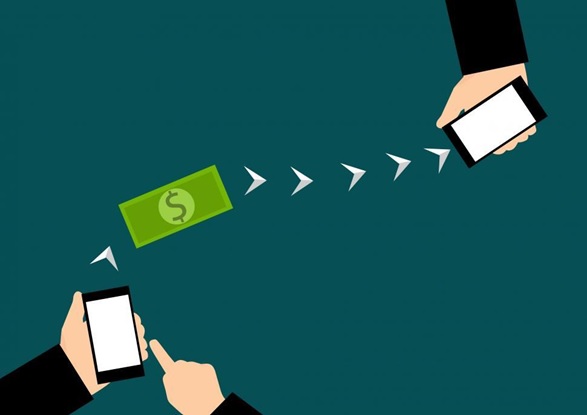Modern business transactions can be hectic. The process of procuring services to establish purchase orders and finally paying invoices to vendors is surprisingly complex—the need to simplify and improve the procure-to-pay (P2P) workflow for most organizations. Reduced spend visibility, lack of readily available data, slow invoice payments, and P2P other issues can become significant problems over time. That’s why improving the P2P workflow is more crucial than ever before. Here are a few ways to improve your organization’s P2P processes, improve workflow, and make both suppliers and employees happier in the long run.
What is procure-to-pay, anyway?
Procure to Pay (P2P) – also known as purchase to pay – is a process companies use to acquire materials/services from suppliers and ensure those suppliers get paid for what they provide. It begins when someone at the organization discovers a need for a particular material/goods or service. That manager writes a request to the Purchasing Department to acquire what’s needed. Then, you choose a vendor/supplier from a group of potential candidates, and the purchasing department creates a purchase order (PO). The vendor fulfills the PO, submits their invoice, and your company validates/pays out the invoice. Some organizations may also have a vendor review in place after the whole P2P process. Put another way, P2P comprises two distinct sections: procurement to purchase order and payments. To that end, P2P works in conjunction with accounts payable (AP). Their roles are distinctive, with each handling a different aspect of the process.
The procurement department sets up:
- Contracts
- Manages POs
- Vendor relationships and management
AP is responsible for:
- Purchase order
- Receipt of invoices
- Invoice verification
- Approving invoices
- Paying invoices
This process requires plenty of oversight and manual work, so automating different aspects is crucial to accurate accounting and quality procurement.
Reporting
The cornerstone of optimizing P2P processes lies in data and reports. It’s never a bad idea to perform an occasional audit on yourself. You need to establish clear goals, evaluate supplier relationships, assess the integrity of the procurement process, and compare PO’s to maximize your savings. Automation via software helps retrieve the critical data you need to obtain a clear idea of your company’s spend and watch out for potential maverick spend (which itself can be a costly affair for any organization). Diving into your company’s data and reports from time to time can yield excellent results, such as:
- Finding hidden cost savings
- Increasing worker productivity
- Reducing the P2P cycle
- Easily integrating procurement with accounts payable
- Identifying inefficiencies and finding improvements
- Discovering lost profits and missed opportunities
With automation, your AP process will be paperless, it will provide accurate records and data, and on top of that, it will be easily accessible. It increases transparency and visibility across all aspects of your spending much simpler while utilizing accumulated data and reports to help you strategically determine which suppliers are worth retaining and where to find better options along the way.
Get along better with your suppliers
It may seem obvious, but one of the most significant issues between companies and vendors revolves around payment. Suppliers are running a business themselves and want to receive compensation for their goods or services. Moreover, they desire to get paid promptly. Slow, delayed, or missed payments can cause irreparable damage to supplier relationships. Improved supplier relationships often happen on the payment side of the P2P process. By implementing powerful digital Procure To Pay solutions into their enterprise management system, managers can create discounts by combining orders and increasing purchase volume. It’s also easier to negotiate more favorable contacts and strategize better with how you interact/utilize your supplier base. Sourcing products and solutions while helping to mitigate risk for both parties is another proper application of a robust software solution. And if that weren’t enough, managers can explore early payment discounts or ways to improve their working capital. Thankfully, P2P management software allows the suppliers to learn the system quickly as well.
Implement a software solution
The next step in optimizing your organization’s procurement and accounts payable processes is implementing a software solution. With the variety of available software out there, finding one that works for you can present a challenge. Here are a few things to look at in procurement software:
- Streamlined purchasing and requisitions
- Software that can help reduce rogue spend
- Enhanced buying capability
- Integration with statement of work (SOW)-based services
- Real-time budgeting and reports
- Spend management and visibility
- Strategic goal setting
With the right P2P solution, you can integrate sourcing, buying, and paying into the same system and ultimately improve your efficiency into the future.
Help employees reduce their workload
Perhaps the best part of using digitized procurement and payment software is how much it helps employees. Often, employees face a tremendous workload and can easily make mistakes or fall behind on work. With digitized applications for some of their duties, it can help them reduce errors and utilize their talents on other projects or elsewhere within the organization. With freed up time to work on different aspects of their jobs, the organization runs much more smoothly. Software is also relatively easy to use right out of the box, so it doesn’t require much training to get everybody on the same page. It ultimately comes down to finding the right solution and work balance that fits your company the best but finding ways to automate both sides of the P2P process will significantly benefit your organization for many years to come.

